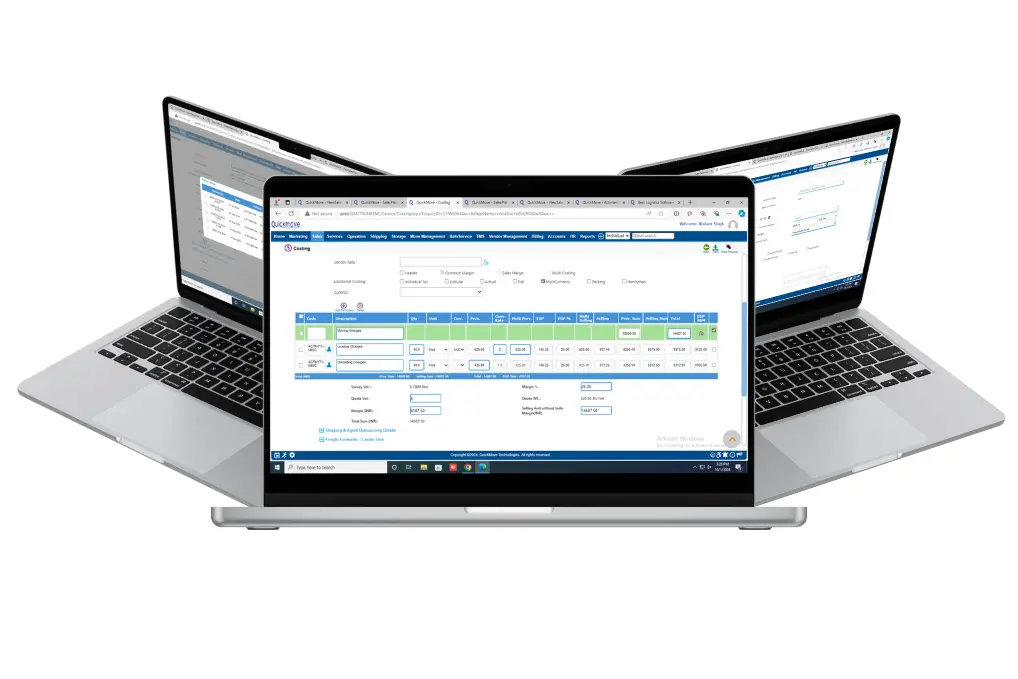1. Automates Routine Tasks to Save Time and Costs
One of the primary benefits of freight forwarding software is automation. Repetitive tasks like generating quotes, processing shipping documents, scheduling shipments, and managing invoices can be automated. This not only saves hours of manual work but also minimizes the chances of errors caused by human oversight.
- Example: Generating bills of lading (BOL) or airway bills (AWB) traditionally takes significant time. With freight forwarding software, templates and automated tools enable quick generation and sharing of documents.
- Cost Impact: Companies save on labor costs, reduce rework, and improve turnaround time, enabling them to serve more customers efficiently.
By automating back-office processes, freight forwarders can redirect their human resources to focus on strategic planning and customer service.
2. Real-Time Tracking Improves Transparency and Customer Satisfaction
Modern freight forwarding software comes with real-time shipment tracking features. Logistics companies and their customers can monitor the status and location of shipments throughout the delivery journey.
- How It Works: The software integrates with GPS, IoT devices, and carrier systems to provide real-time updates on shipment progress.
- Customer Impact: Clients no longer need to constantly follow up for updates, improving customer trust and satisfaction.
- Cost Savings: Fewer customer support calls and faster issue resolution lead to reduced overhead costs.
Improved visibility also allows freight forwarders to identify and address delays proactively, preventing costly disruptions in the supply chain.
3. Optimizes Route Planning to Reduce Transportation Expenses
Freight forwarding software utilizes route optimization tools to identify the most cost-effective and time-efficient routes for shipments. This ensures fuel costs, travel times, and unnecessary detours are minimized.
- Benefits:
- Reduces fuel consumption.
- Improves delivery timelines by avoiding traffic or unfavorable routes.
- Optimizes container space usage, minimizing transportation costs.
For freight forwarders dealing with multiple carriers, automated route selection ensures that operations remain cost-efficient without compromising on delivery performance.
4. Centralizes Data for Better Decision-Making
Freight forwarding software acts as a centralized data hub, combining all critical information such as shipment schedules, carrier details, customer records, and billing data in one platform.
- How It Improves Efficiency:
- Decision-makers can access real-time data, enabling informed and swift decision-making.
- Integrated dashboards provide insights into operational bottlenecks, enabling proactive improvements.
- Accurate reporting reduces costly mistakes, such as billing errors or shipment delays.
- Example: Instead of relying on fragmented spreadsheets, the software generates detailed performance and cost reports, giving companies actionable insights to cut unnecessary expenses.
Centralized data ensures freight forwarders have complete control and visibility over their operations.
5. Reduces Paperwork and Ensures Digital Compliance
The logistics industry has long been burdened by excessive paperwork, including bills of lading, customs documents, invoices, and contracts. Freight forwarding software digitizes all paperwork, making processes faster, error-free, and eco-friendly.
- Advantages:
- Digital documents can be generated, shared, and signed electronically, saving time and resources.
- Cloud-based storage ensures documents are easily accessible, eliminating risks of loss or damage.
- Compliance with international shipping regulations becomes seamless as the software ensures proper documentation standards are met.
- Cost Benefits:
- Saves on printing and storage costs.
- Reduces administrative workloads related to document management.
- Avoids penalties from non-compliance with shipping regulations.
6. Enhances Collaboration Across Teams and Partners
Freight forwarding involves collaboration between multiple stakeholders, including customers, carriers, customs agents, and internal teams. Freight forwarding software promotes seamless collaboration through a unified platform.
- Teams can share information, schedules, and documents instantly.
- Customers can track and receive updates in real time, reducing communication delays.
- Integration with carriers and third-party systems eliminates the need for manual data transfers.
By improving collaboration, freight forwarders can avoid costly errors caused by miscommunication and ensure smooth operations across all stages of the supply chain.
Conclusion
Freight forwarding software is no longer a luxury but a necessity for logistics companies aiming to reduce costs, improve operational efficiency, and stay ahead in a highly competitive industry. From automating routine tasks and optimizing routes to enhancing collaboration and reducing paperwork, this software transforms freight forwarding into a seamless, efficient, and cost-effective process.
By investing in modern freight forwarding software, companies can achieve:
- Cost savings through automation and optimization.
- Improved efficiency with streamlined workflows.
- Greater customer satisfaction through real-time transparency and faster service.
Adopting this technology is the key to achieving long-term growth, reducing operational bottlenecks, and enhancing profitability. The future of logistics belongs to companies that embrace digital transformation and leverage smart tools like freight forwarding software.
 Email Us
Email Us

 Freight Forwarding Software
Freight Forwarding Software Moving/Removal Software
Moving/Removal Software Warehouse Management System
Warehouse Management System Transport Management System
Transport Management System Customer Service Portal
Customer Service Portal Move Survey Quote Pro
Move Survey Quote Pro Digital Logistics Inventory App
Digital Logistics Inventory App

